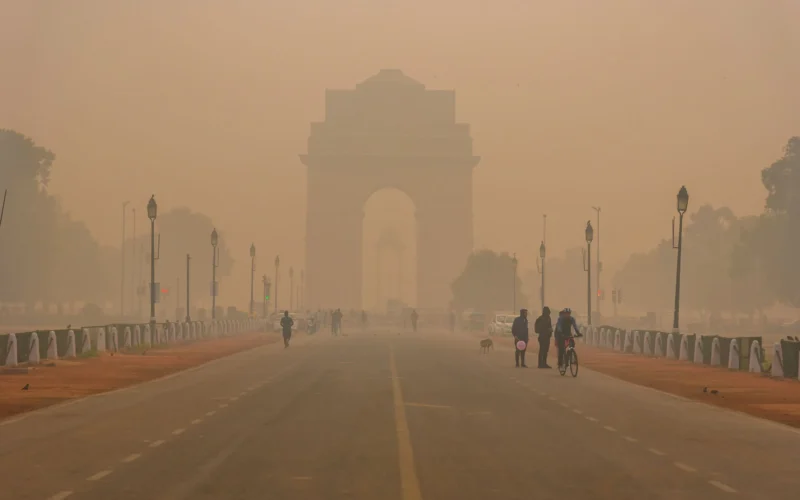New Delhi (Rajeev Sharma): Delhi woke up to another grim morning on Monday as pollution levels continued to climb, pushing air quality into dangerous territory in several parts of the capital. The situation prompted officials to roll out stricter anti-pollution protocols under Stage II of the Graded Response Action Plan (GRAP).
Data from the Central Pollution Control Board (CPCB) placed the city’s average Air Quality Index (AQI) at 333 by morning — well within the ‘very poor’ category. However, localized monitoring stations revealed a much darker picture in some neighborhoods, where pollution spiked into the ‘severe’ bracket.
At Anand Vihar, a known pollution hotspot, the AQI surged to 464 — a level considered acutely harmful to health. Nearby areas such as Rohini (403) and Satyawati College (432) also recorded severe pollution levels. In contrast, places like Parparganj (252), Burari Crossing (266), and ITO (287) remained slightly better off but still well above safe limits.
The worsening air quality triggered immediate action from the Commission for Air Quality Management (CAQM), which activated the second phase of GRAP on Sunday evening. Officials said the AQI had been rising steadily throughout the day, touching 302 by 7 PM.
Stage II of GRAP introduces a range of preventive measures aimed at controlling dust and vehicle emissions. These include regular water spraying and mechanized road cleaning, especially during non-peak hours. Construction and demolition activities are being closely monitored to ensure strict compliance with environmental safeguards.
To reduce emissions from transport, the plan calls for increasing the availability of CNG and electric buses and improving metro service frequency. Authorities are also urging commuters to travel during off-peak hours by offering differential fares.
RWAs across Delhi have been asked to provide electric heaters to domestic staff, including guards and sanitation workers, to reduce the need for burning waste or wood for warmth as temperatures dip.
The new restrictions also tighten entry rules for inter-state buses. Only vehicles running on cleaner fuels such as CNG, electricity, or BS-VI diesel will be allowed into the capital. However, long-distance tourist buses under all-India permits are currently not included in the ban.
With winter approaching and festive fireworks on the horizon, experts fear pollution could worsen in the coming days unless weather conditions improve or further restrictions are imposed.
Health professionals have advised vulnerable populations — including children, the elderly, and individuals with respiratory illnesses — to avoid outdoor activities and wear masks when stepping out.
As Delhi grapples with another season of toxic air, residents are bracing for what could be a long and hazardous winter ahead.

